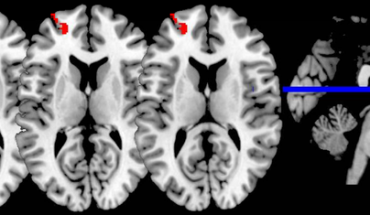By: Farzin Espahani
Love and desire have puzzled poets and scientists alike for centuries. But in the past few decades, evolutionary psychology has provided a compelling framework for understanding the biological and psychological mechanisms underlying human mating behavior. Groundbreaking research by Dr. David Buss and Dr. Helen Fisher has illuminated the distinct mating strategies that men and women have developed over millennia, shaped by the pressures of natural selection. This article explores the evolutionary underpinnings of male and female mating strategies, and how these strategies influence what we call love and infatuation.
The Evolutionary Roots of Mating Behavior
Evolutionary psychology posits that many of our psychological traits are the result of adaptations to ancestral environments. When it comes to mating, the fundamental difference between male and female reproductive biology has led to different evolutionary pressures on each sex.
For women, reproduction is biologically costly. Pregnancy, lactation, and child-rearing demand significant energy and time. From an evolutionary standpoint, this means that women have historically been more selective in choosing mates, prioritizing those who could offer resources, protection, and commitment.
Men, on the other hand, can reproduce with relatively minimal biological investment. One act of copulation can potentially result in offspring. Thus, men have evolved strategies to maximize reproductive success by seeking multiple mating opportunities.
These biological realities have shaped distinct, yet flexible, mating strategies for each sex.
Male Mating Strategies
Dr. David Buss, a leading figure in evolutionary psychology, has extensively documented the ways men adapt their mating strategies to context. While men can and do form long-term pair bonds, especially when investing in offspring increases their reproductive success, short-term mating remains a prominent male strategy.
Key characteristics of male mating strategies include:
- Short-Term Mating Orientation: Men, on average, exhibit a greater desire for sexual variety. They fantasize about more partners, and they are more likely to consent to sex sooner in a relationship.
- Lower Selectivity in Short-Term Contexts: Men generally have lower standards for short-term mates. Traits like physical attractiveness take precedence over emotional compatibility or intelligence.
- Preference for Fertility Cues: Men are drawn to cues of youth and fertility, such as clear skin, waist-to-hip ratio, and facial symmetry. These preferences are largely unconscious and have been consistent across cultures.
- Mate Guarding: When men do invest in a long-term mate, they are more vigilant against sexual infidelity. Paternal uncertainty—the fact that men cannot be sure they are the biological fathers—has shaped a psychological tendency toward possessiveness and jealousy.
Female Mating Strategies
Helen Fisher, a biological anthropologist, has emphasized the complexity of female mating behavior. While women are often portrayed as primarily monogamous or nurturing, evolutionary psychology suggests that their strategies are nuanced and context-dependent.
Female strategies include:
- Long-Term Mating Preferences: Women generally prefer long-term partners who demonstrate signs of resource acquisition ability, ambition, and emotional stability. These traits increase the chances of offspring survival.
- Dual Mating Strategy Hypothesis: Women may pursue different partners for genetic benefits versus long-term investment. This is particularly evident during ovulation, when women may experience heightened attraction to traits like masculinity or dominance that signal genetic fitness.
- Mate Selectivity: Due to the high cost of reproduction, women tend to be choosier when selecting mates. They invest more time in courtship and scrutinize the behavior and intentions of potential partners.
- Mate Switching Hypothesis: Women may remain in unsatisfying relationships while covertly evaluating alternative mates. This strategy allows them to trade up when a more suitable partner becomes available, ensuring better genetic or resource advantages for their offspring.
Infatuation vs. Love: Evolutionary Tools
Both Helen Fisher and David Buss emphasize that emotions like infatuation and love are not random or whimsical but evolved psychological mechanisms designed to serve reproductive ends.
Infatuation: The Spark of Mate Selection
Infatuation, characterized by obsessive thoughts, emotional highs and lows, and intense desire, is believed to be an adaptive mechanism for initiating pair bonds. Fisher refers to this as the “attraction system,” governed by dopamine and norepinephrine, chemicals that increase focus, motivation, and energy.
Infatuation serves several evolutionary functions:
- Motivating Pair Formation: The euphoric feelings make individuals more likely to pursue and maintain proximity to a potential mate.
- Focused Attention: Infatuation narrows attention to one person, increasing the chances of forming a stable pair bond.
- Short-Term Advantage: From a male perspective, infatuation can facilitate sexual access. For women, it allows time to assess a mate’s long-term potential.
However, infatuation is typically temporary, biologically designed to fade within months to a few years. This fade-out may have evolved to allow humans to re-evaluate their choices or to promote serial monogamy, which was likely adaptive in ancestral environments.
Love: The Long-Term Bonding System
While infatuation is marked by excitement and novelty, love is characterized by attachment, trust, and mutual investment. Fisher identifies love as part of the “attachment system,” primarily governed by oxytocin and vasopressin.
Love facilitates:
- Parental Investment: Long-term bonding increases the survival rates of offspring, especially in species like humans that require extended care.
- Emotional Security: Love creates a stable emotional environment that fosters cooperation and mutual support.
- Mate Retention: It helps both partners resist external temptations and maintain the partnership through challenges.
Interestingly, while love can be enduring, it too has evolutionary limits. Studies suggest that romantic passion declines over time, though some couples do maintain high levels of romantic love for decades. This longevity may be due to reinforcing behaviors like mutual respect, physical affection, and shared goals.
Cultural Overlay and Flexibility
It’s important to note that evolutionary tendencies do not equate to rigid rules. Culture, individual experience, and personal values shape how mating strategies are expressed. For example, in modern societies, access to contraception, economic independence, and shifting gender norms have created new dynamics in dating and relationships.
Men and women may adopt non-traditional strategies, such as serial monogamy, consensual non-monogamy, or child-free lifestyles. These behaviors may deviate from traditional evolutionary models, but they often represent the same underlying drives expressed in different social contexts.
Dr. Buss has pointed out that human mating is strategic and adaptive. Individuals assess their own “mate value” and adapt their strategies accordingly. For example, a high-status man may pursue short-term mating more aggressively, while a woman with significant resources might be less inclined to prioritize a partner’s wealth.
Conflict and Mating Strategies
One of the more provocative aspects of evolutionary psychology is its explanation of sexual conflict. Because male and female reproductive interests are not always aligned, deception, manipulation, and coercion can emerge as strategies.
Examples include:
- Men exaggerating commitment to gain sexual access.
- Women feigning sexual interest to secure resources or protection.
- Mate guarding behaviors, including jealousy, surveillance, or controlling tactics.
While these behaviors are not morally endorsed, understanding their evolutionary roots can help explain why they persist and how they might be mitigated through education and communication.
The evolutionary perspective on human mating strategies offers a powerful lens through which to view love, desire, and relationships. Men and women have evolved both complementary and conflicting strategies shaped by the different costs and benefits of reproduction.
Infatuation and love, rather than being mysterious or magical, are deeply rooted in our biology. They have evolved to initiate, maintain, and sometimes dissolve romantic bonds in ways that historically enhanced reproductive success.
However, our minds are not merely prisoners of evolutionary drives. With self-awareness, education, and emotional intelligence, individuals can navigate their mating choices more wisely. Understanding the hidden logic behind our impulses empowers us to build healthier, more fulfilling relationships—in ways both our ancestors and future generations would approve of.
In the end, while evolution gave us the tools, it is up to us to decide how to use them.




